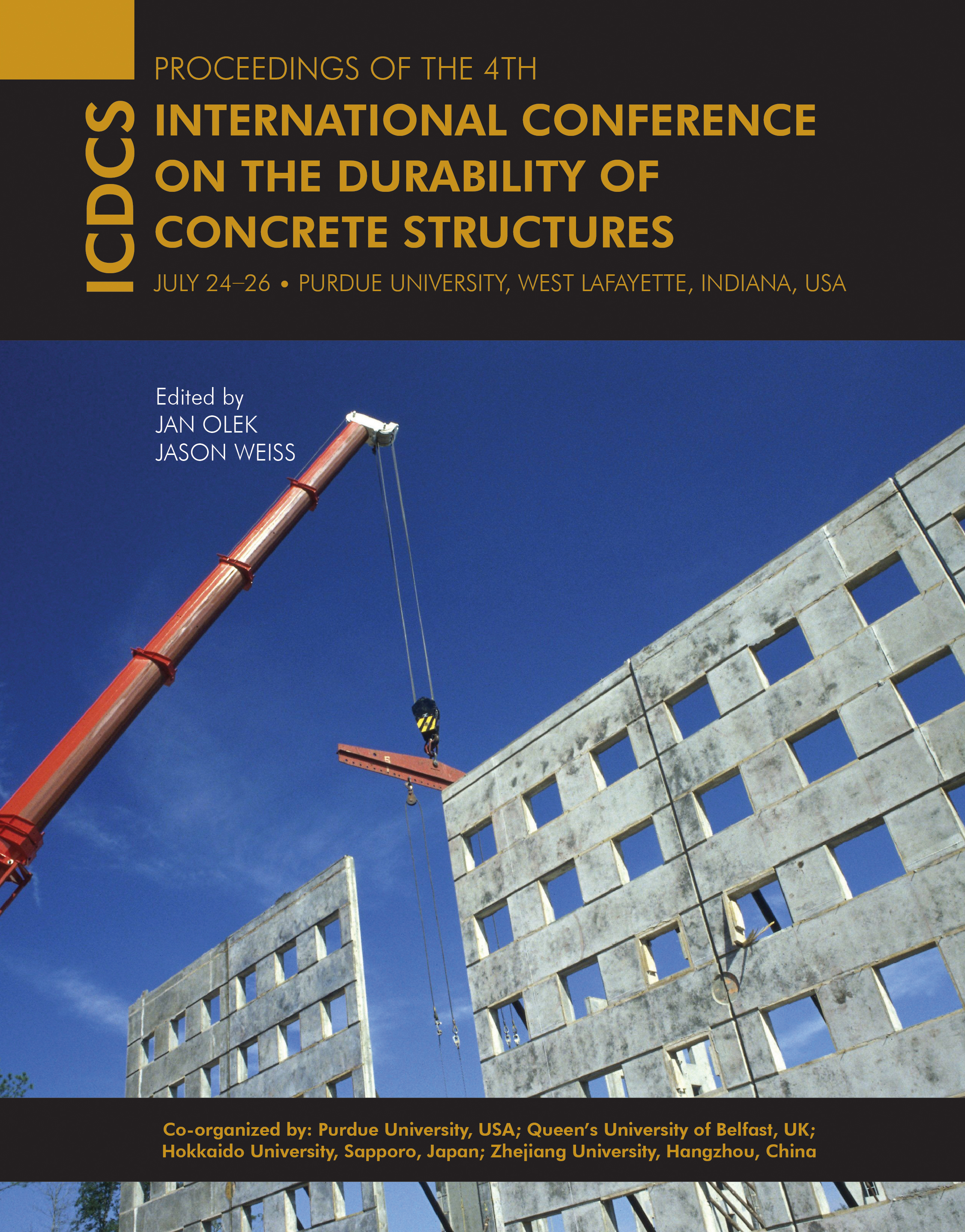Abstract
Concrete is the most widely used material for the construction of the wastewater collection, storage, and treatment infrastructure. The chemical and physical characteristics of hydrated Portland cement may make it susceptible to degradation under highly acidic conditions. As a result, some concrete wastewater infrastructure may be susceptible to a multistage degradation process known as microbially induced corrosion (MIC). MIC begins with the production of aqueous hydrogen sulfide (H2S(aq)) by anaerobic sulfate-reducing bacteria present below the waterline. H2S(aq) partitions to the gas phase where it is oxidized to sulfuric acid by the aerobic sulfur-oxidizing bacteria Thiobacillus that resides on concrete surfaces above the waterline. Sulfuric acid then attacks the cement paste portion of the concrete matrix through decalcification of calcium hydroxide and calcium silica hydrate coupled with the formation of expansive corrosion products and loss of coarse aggregate. The attack proceeds inward, resulting in reduced service life and potential failure of the concrete structure. There are several challenges associated with assessing a concrete’s susceptibility to MIC. First, no standard laboratory tests exist to assess concrete resistance to MIC. Straightforward reproduction of MIC in the laboratory is complicated by the use of microorganisms and hydrogen sulfide gas. Physicochemical tests simulating MIC by immersing concrete specimens in sulfuric acid offer a convenient alternative but do not accurately capture the damage mechanisms associated with biological corrosion. Comparison of results between research studies is difficult due to discrepancies that can arise in mixture design, specimen preparation, and experimental methods even if current ASTM standards are followed.
DOI
10.5703/1288284315388
Included in
Review of Microbially Induced Corrosion and Comments on Needs Related to Testing Procedures
Concrete is the most widely used material for the construction of the wastewater collection, storage, and treatment infrastructure. The chemical and physical characteristics of hydrated Portland cement may make it susceptible to degradation under highly acidic conditions. As a result, some concrete wastewater infrastructure may be susceptible to a multistage degradation process known as microbially induced corrosion (MIC). MIC begins with the production of aqueous hydrogen sulfide (H2S(aq)) by anaerobic sulfate-reducing bacteria present below the waterline. H2S(aq) partitions to the gas phase where it is oxidized to sulfuric acid by the aerobic sulfur-oxidizing bacteria Thiobacillus that resides on concrete surfaces above the waterline. Sulfuric acid then attacks the cement paste portion of the concrete matrix through decalcification of calcium hydroxide and calcium silica hydrate coupled with the formation of expansive corrosion products and loss of coarse aggregate. The attack proceeds inward, resulting in reduced service life and potential failure of the concrete structure. There are several challenges associated with assessing a concrete’s susceptibility to MIC. First, no standard laboratory tests exist to assess concrete resistance to MIC. Straightforward reproduction of MIC in the laboratory is complicated by the use of microorganisms and hydrogen sulfide gas. Physicochemical tests simulating MIC by immersing concrete specimens in sulfuric acid offer a convenient alternative but do not accurately capture the damage mechanisms associated with biological corrosion. Comparison of results between research studies is difficult due to discrepancies that can arise in mixture design, specimen preparation, and experimental methods even if current ASTM standards are followed.





